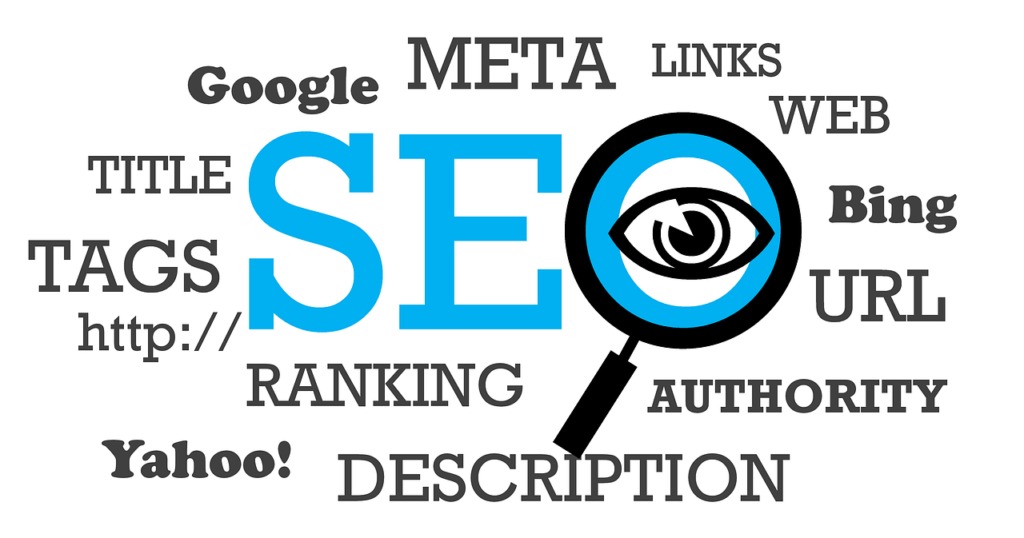Have you ever wondered why some businesses seem to effortlessly dominate their markets while others struggle to gain traction? The secret often lies in their approach to understanding and outmaneuvering their competition. Today, we’re diving deep into the world of competitor analysis – not the surface-level stuff you’ll find everywhere else, but the strategic, actionable intelligence that actually drives results.
Let’s be honest: most competitor analysis guides tell you to “check out what your competitors are doing” without giving you the roadmap to actually use that information to crush it in your market. This comprehensive guide changes that. By the time you finish reading, you’ll have a battle-tested framework and toolkit that transforms competitive intelligence into competitive advantage.
What Is Competitor Analysis (And Why Most People Get It Wrong)
Competitor analysis is the systematic process of identifying, researching, and evaluating your business rivals to uncover opportunities, threats, and strategic insights that inform your marketing, product, and business decisions. But here’s where most people mess up – they treat it like a one-time research project instead of an ongoing strategic advantage.
The businesses that win don’t just analyze competitors; they continuously monitor, adapt, and stay three steps ahead. They understand that effective competitor analysis isn’t about copying what others do – it’s about finding gaps, identifying weaknesses, and discovering untapped opportunities that others have missed.
Think of it this way: while your competitors are playing checkers, you’ll be playing chess. You’ll see moves before they make them, anticipate market shifts before they happen, and position yourself in spaces they haven’t even discovered yet.
The Foundation: Identifying Your Real Competitors
Before diving into tools and tactics, you need to know who you’re actually competing against. This sounds obvious, but you’d be surprised how many businesses get this fundamentally wrong.
Your competitors fall into three categories:
Direct competitors offer the same products or services to the same target audience. If you’re a pizza restaurant, other pizza places in your area are direct competitors.
Indirect competitors solve the same customer problem with different solutions. That pizza restaurant also competes with burger joints, Chinese takeout, and meal delivery services – anything that satisfies the “I need dinner tonight” problem.
Replacement competitors represent alternative ways customers might spend their money or time. For a movie theater, Netflix isn’t selling tickets, but it’s absolutely competing for Friday night entertainment dollars.
Here’s a pro tip that most guides miss: use Google’s “People also ask” and “Related searches” features when searching for your main keywords. These reveal the mental models your customers use when thinking about solutions, often uncovering competitors you never considered.
Essential Tools for Competitive Intelligence
Now let’s talk tools – the weapons in your competitive arsenal. I’m going to break these down into categories based on what type of intelligence you’re gathering.
Website and Traffic Analysis Tools
SEMrush remains the gold standard for comprehensive competitor analysis. It reveals your competitors’ top-performing keywords, their ad spend, backlink profiles, and estimated traffic. The real power comes from the “Competitive Positioning Map” feature, which shows you exactly where you stand in your competitive landscape.
Ahrefs excels at backlink analysis and content gap identification. Use their “Content Gap” tool to discover keywords your competitors rank for that you don’t – these represent immediate opportunities for content creation and SEO improvement.
SimilarWeb provides traffic insights that help you understand market share and user behavior patterns. Their “Industry Analysis” feature is particularly valuable for understanding seasonal trends and market dynamics.
Social Media Intelligence
Hootsuite Insights (formerly Brandwatch) monitors social conversations about your competitors, revealing customer sentiment, common complaints, and engagement patterns. This intelligence is pure gold for identifying service gaps and messaging opportunities.
BuzzSumo shows you which content performs best for your competitors across social platforms. More importantly, it reveals the influencers and publications that consistently share their content – potential outreach targets for your own campaigns.
Pricing and Product Intelligence
Prisync tracks competitor pricing in real-time, essential for e-commerce businesses. It alerts you to price changes and helps you maintain competitive positioning without constantly manual checking.
Owler provides company intelligence including funding, employee counts, and news updates. This helps you understand your competitors’ resources and strategic direction.
Content and SEO Analysis
Screaming Frog crawls competitor websites to reveal their technical SEO setup, internal linking structure, and content organization. This technical intelligence often reveals optimization opportunities they’ve missed.
Google Alerts remains one of the most underutilized competitive intelligence tools. Set up alerts for competitor names, key personnel, and industry keywords to stay informed about their activities and market movements.
Advanced Tactics That Separate Winners from Wannabes
Here’s where we move beyond basic competitive research into advanced strategic intelligence gathering.
The Content Flanking Strategy
Instead of directly competing for the same keywords, identify content gaps where your competitors have weak coverage. Use Ahrefs’ “Content Gap” analysis to find keywords with search volume that your competitors rank poorly for (positions 4-10). These represent opportunities to quickly capture market share with targeted content.
Create comprehensive, authoritative content for these gaps. Your goal isn’t just to rank – it’s to become the definitive resource that makes competitor content irrelevant.
The Backlink Interception Method
Analyze your competitors’ broken or lost backlinks using Ahrefs’ “Best by Links” and “Lost Links” reports. Reach out to these websites offering your content as a replacement. This tactic is incredibly effective because you’re solving a problem (broken link) while gaining a proven valuable backlink.
The Customer Journey Mapping Technique
Map your competitors’ entire customer journey from awareness to purchase. Sign up for their email lists, follow their social media, and document every touchpoint. Look for gaps in their nurturing sequence or points where prospects might drop off – these represent opportunities for your superior customer experience.
The SERP Domination Strategy
For your most important keywords, analyze the entire first page of Google results. Identify what types of content rank (blog posts, product pages, videos, etc.) and what search intent each result satisfies. Then create content that satisfies multiple intents or provides a more comprehensive solution than existing results.
Turning Intelligence into Action: The Strategic Framework
Information without action is just expensive entertainment. Here’s how to transform your competitive intelligence into market-dominating strategy.
The Opportunity Matrix
Create a simple 2×2 matrix plotting opportunity size (high/low) against ease of execution (easy/hard). Focus first on high-opportunity, easy-execution wins – these provide quick momentum and resources for tackling bigger challenges.
The Competitive Response Protocol
Establish systematic processes for responding to competitive moves. When a competitor launches a new feature, runs a promotion, or changes messaging, you need predetermined response protocols rather than reactive scrambling.
Document decision trees: “If competitor does X, we respond with Y within Z timeframe.” This preparation allows for swift, strategic responses that often outmaneuver slower-moving competitors.
The Market Gap Exploitation System
Regularly audit your competitive landscape for emerging gaps. These appear when:
- Customer needs evolve faster than competitor adaptation
- New technologies create solution possibilities
- Market segments grow beyond existing service capacity
- Regulatory changes create new requirements
Position yourself to fill these gaps before competitors recognize they exist.
Measuring and Optimizing Your Competitive Position
Competitor analysis isn’t a set-it-and-forget-it activity. Establish key performance indicators that track your competitive position over time.
Monitor share of voice across digital channels, keyword ranking improvements relative to competitors, and customer acquisition cost comparisons. Track metrics like time-to-market for new features compared to competitors and customer retention rates in head-to-head competitive situations.
Set up automated reporting that provides weekly or monthly competitive intelligence summaries. This consistent monitoring helps you spot trends and opportunities before they become obvious to everyone else.
Common Pitfalls and How to Avoid Them
The biggest mistake in competitor analysis is analysis paralysis – spending so much time researching that you never act on insights. Set strict time limits for research phases and force decision-making with incomplete information.
Another critical error is competitor obsession – making decisions based solely on what competitors do rather than what customers need. Use competitive intelligence to inform strategy, not dictate it.
Don’t underestimate indirect and replacement competitors. Netflix didn’t kill Blockbuster by making better physical video stores – they changed the entire game. Stay alert for disruption from unexpected directions.
Your Next Steps to Competitive Domination
Start with a 30-day competitive intelligence sprint. Choose your top three competitors and conduct deep analysis using the tools and tactics outlined above. Focus on finding three immediate opportunities you can exploit within the next 90 days.
Establish ongoing monitoring systems using the free and paid tools that fit your budget. Even basic Google Alerts and manual website checking provide valuable intelligence when done systematically.
Remember: the goal isn’t to become your competitors – it’s to become so much better that comparison becomes irrelevant. Use competitive intelligence to identify opportunities for differentiation, not imitation.
The businesses that dominate their markets don’t just watch their competitors – they anticipate, outmaneuver, and consistently deliver superior value. With the strategies and tools in this guide, you now have everything you need to transform competitive intelligence into competitive advantage.
The question isn’t whether you can outrank your rivals – it’s how quickly you’ll implement these strategies to make it happen. Your competitors are analyzing you too, so the advantage goes to whoever acts fastest and most strategically.
Time to get started.

